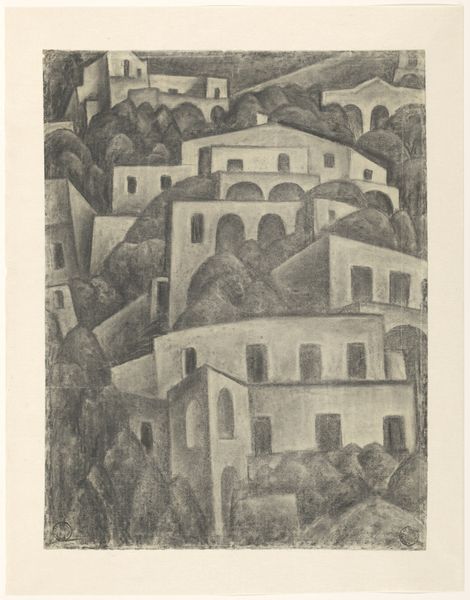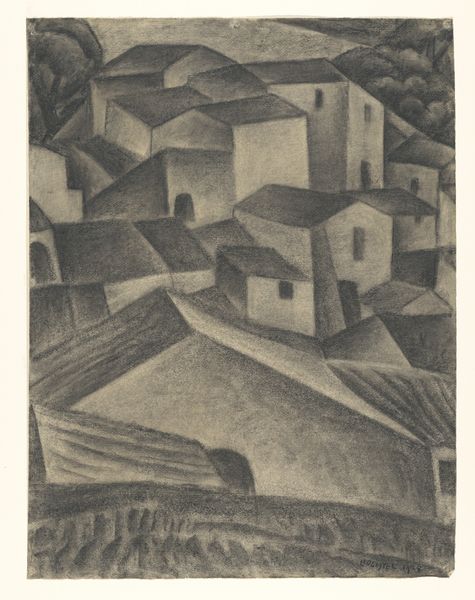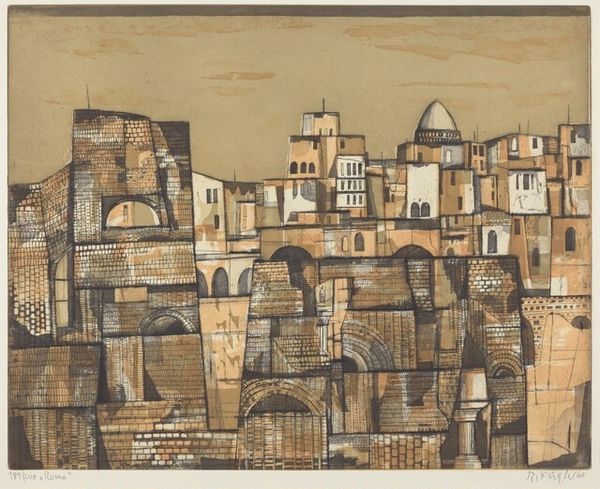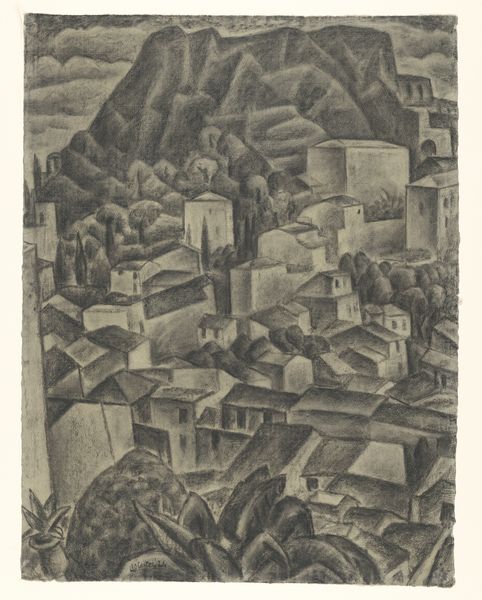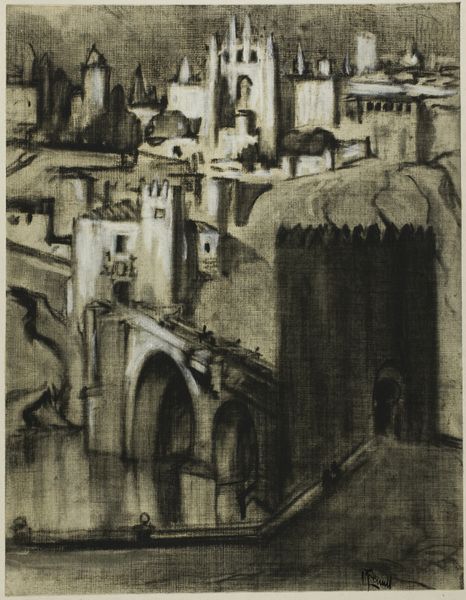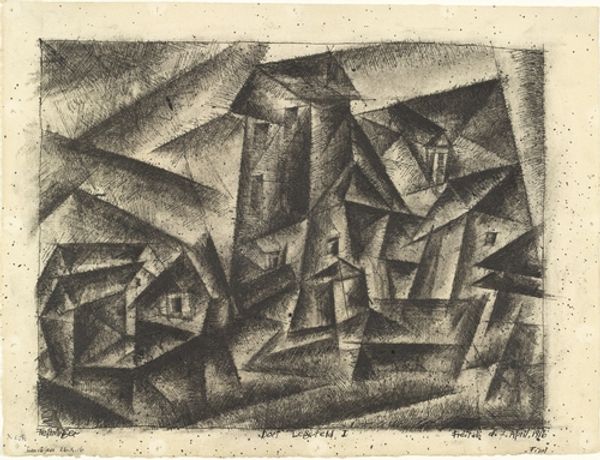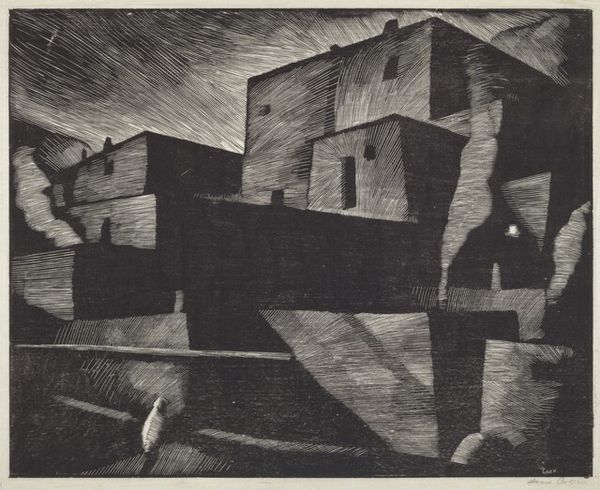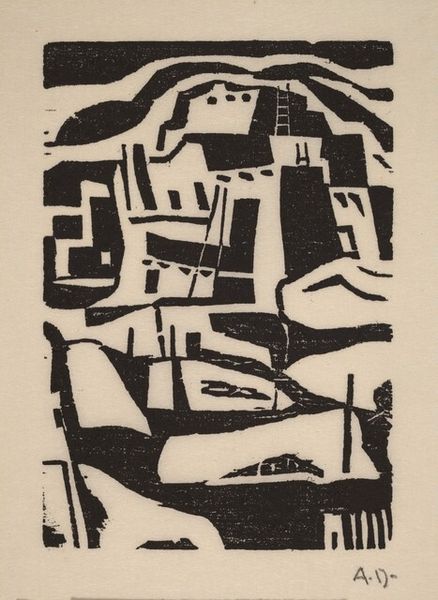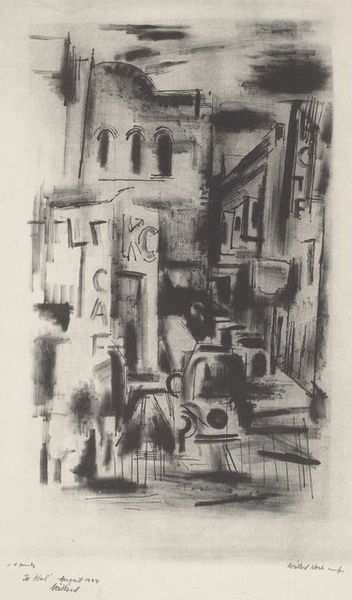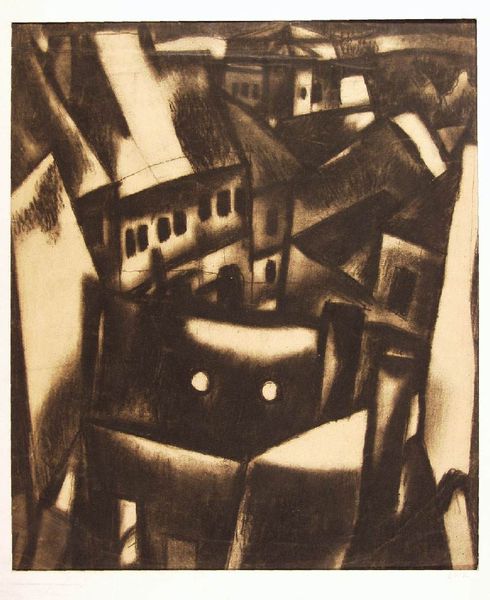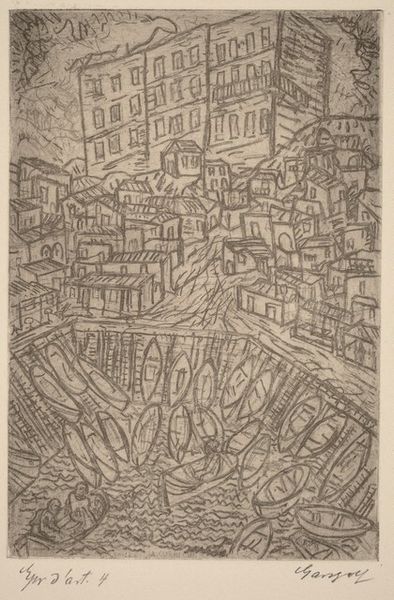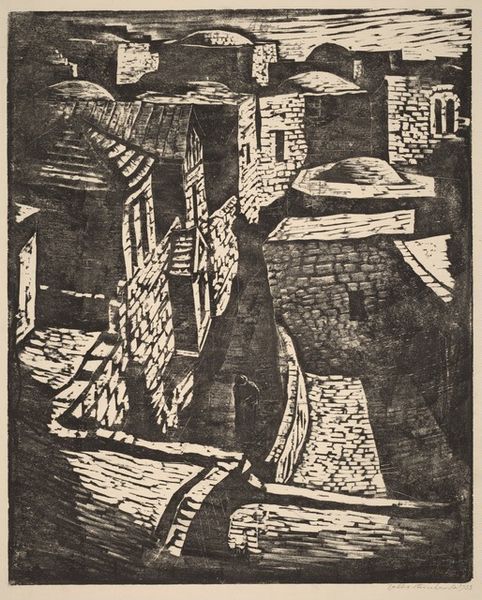
drawing, charcoal
#
drawing
#
landscape
#
german-expressionism
#
charcoal drawing
#
pencil drawing
#
geometric
#
cityscape
#
charcoal
#
modernism
Dimensions: height 645 mm, width 490 mm
Copyright: Rijks Museum: Open Domain
Curator: We’re looking at “Gezicht in een Italiaans dorp,” or "View in an Italian Village," a charcoal drawing made in 1924 by Dutch artist Leo Gestel. It resides here at the Rijksmuseum. Editor: Whoa, it's all geometric and stacked, like a concrete honeycomb clinging to a hillside. Kinda oppressive, honestly. Curator: Oppressive, yes, but that’s an intriguing response. Consider this was post-World War I. Artists were grappling with disillusionment, reflecting on the failure of societal structures, a theme heavily explored within German Expressionism, a movement that significantly influenced Gestel. Editor: Expressionism, gotcha. The stark charcoal and sharp angles really amplify that sense of… weight. The buildings are just jammed together, no breathing room. Curator: Indeed. The composition eliminates any sense of idyllic charm we might typically associate with an Italian village. The geometric abstraction serves to dissect the subject, reducing the buildings to their barest forms, devoid of individual character. We could see this as reflecting the increasing urbanization and alienation experienced in the interwar period. Editor: It feels timeless in a weird way, even though it’s depicting a specific place at a specific moment. The simplification…it's like the *idea* of a village, stripped of sentimentality. Like stage scenery for an existential drama. Curator: And that ties into how modernism, more broadly, interrogated representation itself. By deconstructing the visual landscape, Gestel challenges the viewer to reconsider their understanding of "place," pushing beyond postcard aesthetics. He invites us to examine the psychological impact of the built environment. Editor: So, it’s not just *what* he's drawing but *how* he's making us *feel* about it. That heaviness definitely translates. Makes you think about who lives in those structures, crammed together like that... Curator: Exactly, it can be understood through the lens of social critique. A perspective emphasizing class and access to livable spaces, particularly as postwar urban environments changed radically. Editor: Well, I’m leaving with a lot to consider, beyond my initial "oppressive honeycomb" reaction! Curator: And hopefully with a renewed perspective on how art reflects, refracts, and interrogates the complex sociopolitical realities of its time.
Comments
No comments
Be the first to comment and join the conversation on the ultimate creative platform.
